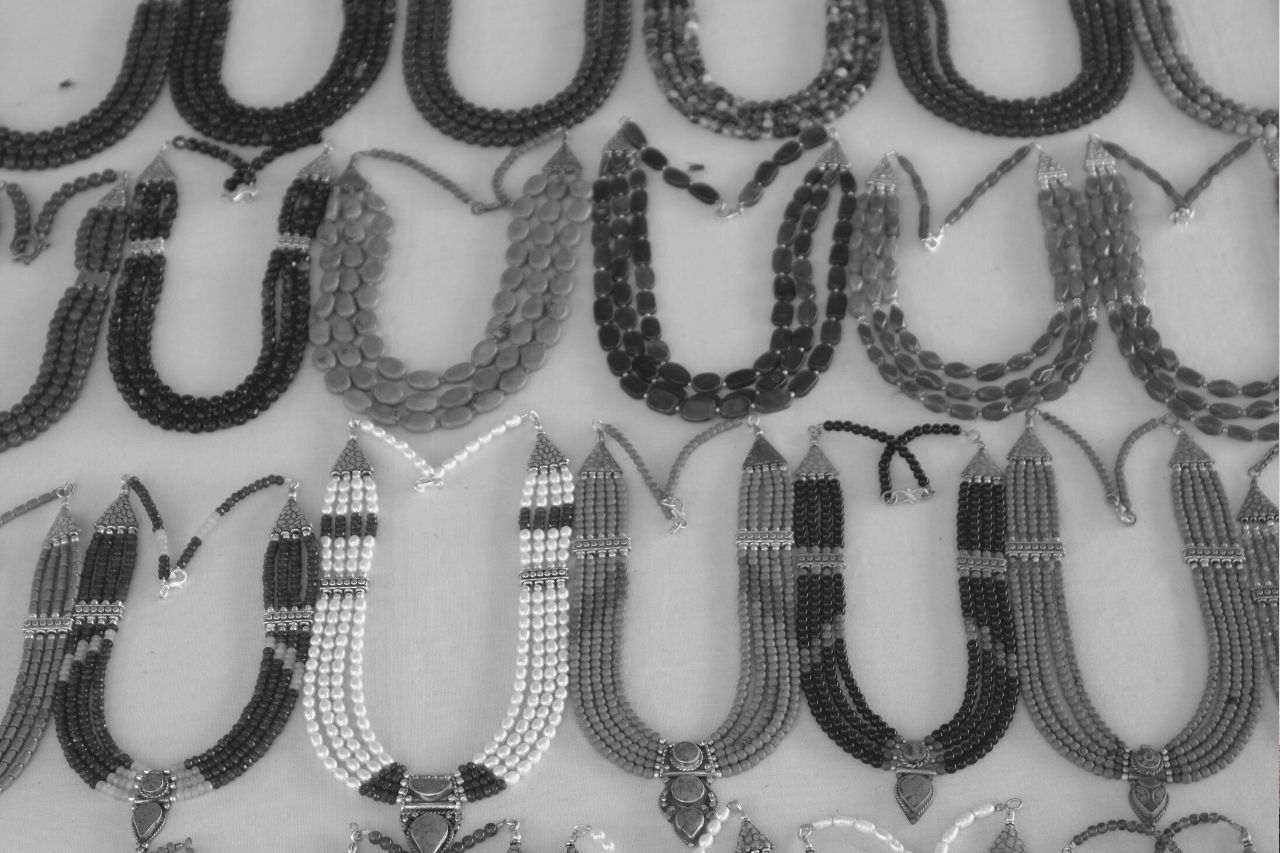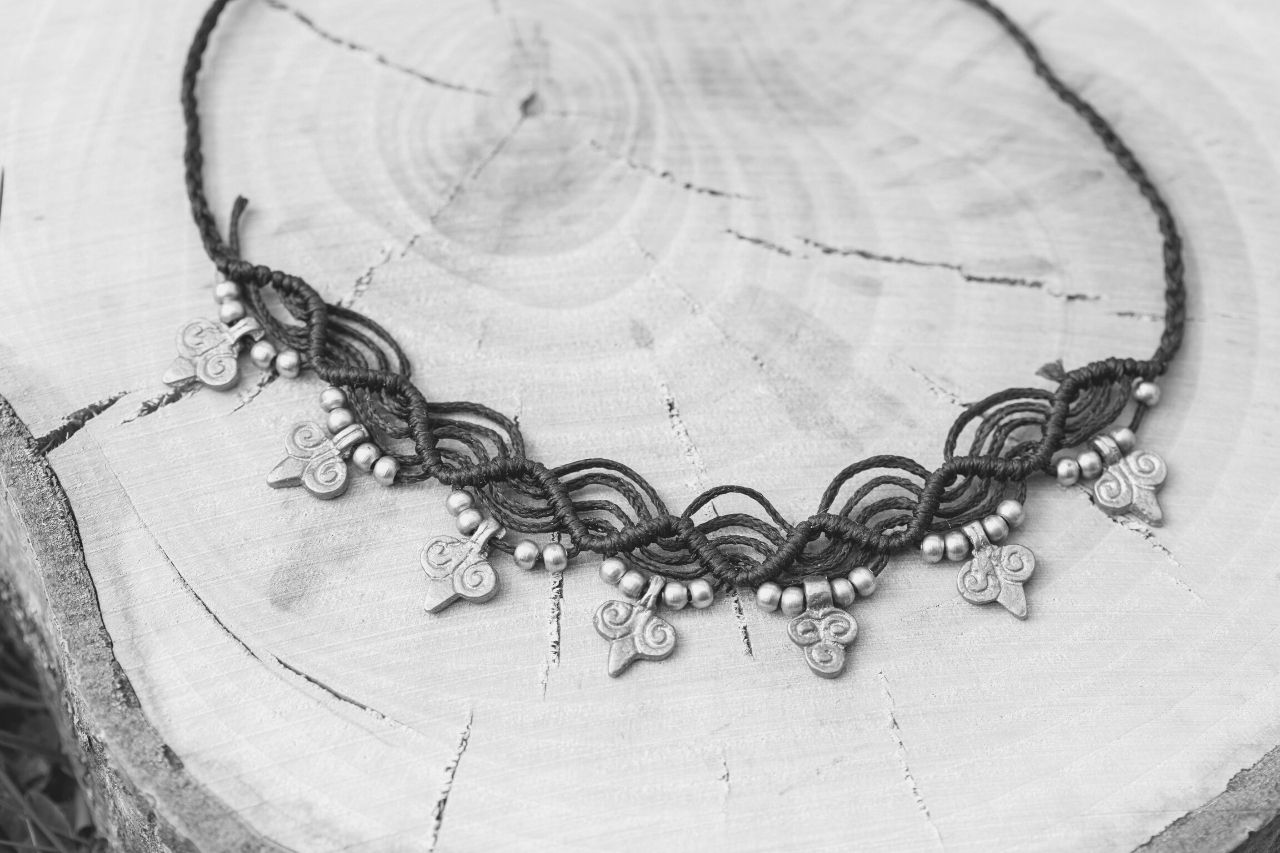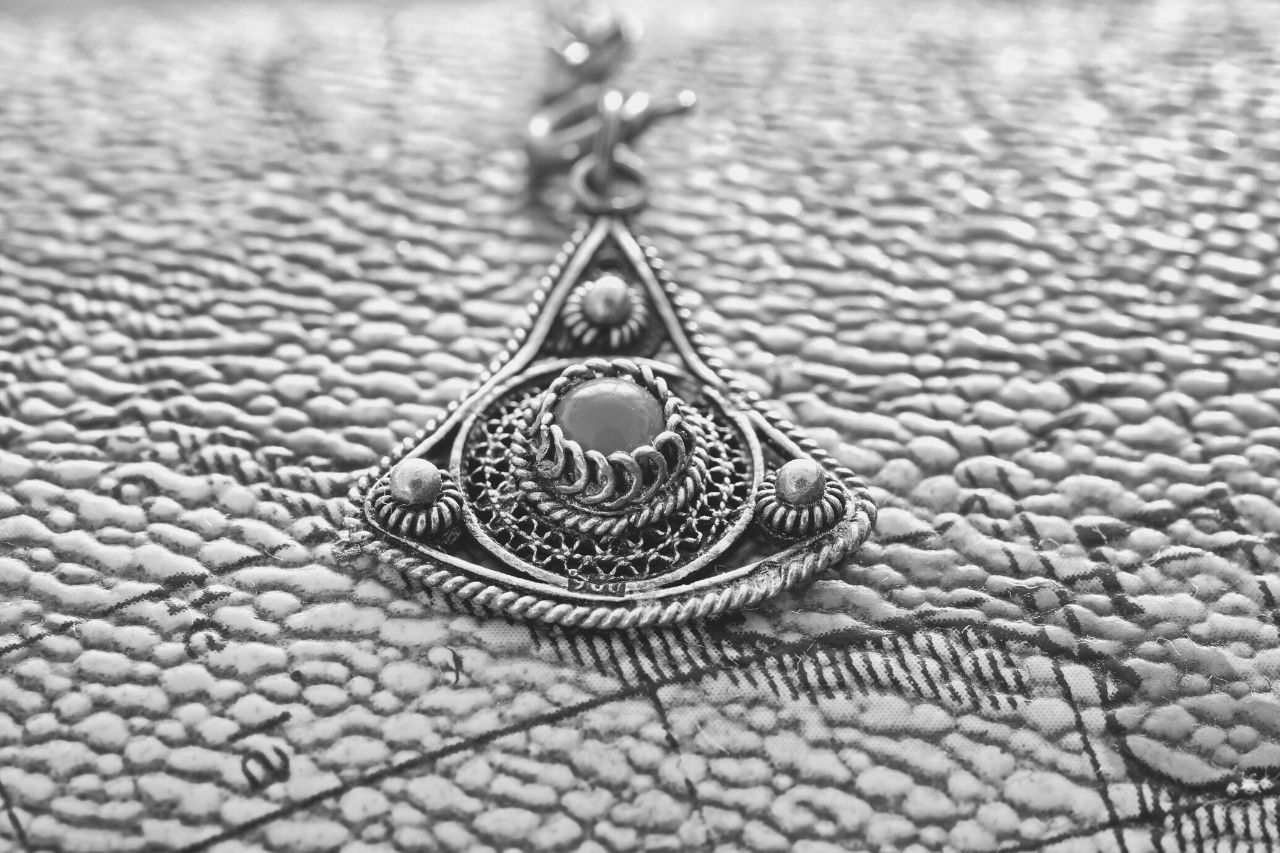Sumerian Jewelry: The Origin of Mesopotamian’s Most Valued Jewelry
Sumer is also known as the cradle of civilization. It originated in the ancient lands of Mesopotamia, an area well known for its fine workmanship for jewelry.
Sumerian jewelry makers were the initial people in 2750 BC to use techniques such as granulation and filigree. We got all the information you need about Sumerian, ancient Mesopotamian, and Babylonian jewelry. We will also talk about the uses of Sumerian jewelry. We will share these fascinating facts that we acquired from professional historians.
Uses of Sumerian Jewelry
As decorative ornaments by men and women
A status symbol for royals, noblemen, and noblewomen
Burial jewelry
Offering in the temple to the gods
Wedding gift, dowry, and inheritance
Idols and statues were adorned with jewelry to depict it as a spiritual instrument
They paired each planet with its unique jewelry to control their fate
A tool in diplomacy used as a subject of war with the heading of wealth and a military campaign tool
The Origin of Sumerian Jewelry
There was widespread trade in Southwest Asia and the Arabian Peninsula before 5000BC. This is evident from seashells and obsidian beads in the jewelry found in current Iraq dating far back. In 2500BC, the Sumerian city of Ur grew into a civilization with affluent court life. They buried their rulers in whole ornate. The people entombed the soldiers and servants with the royal deceased. Currently, the knowledge and uses of Sumerian Jewelry and other ancient jewelry are often derived from these royal graves.
The Sumerians were unique and the most extraordinary people to ever live on the face of the earth. They single-handedly invented civilization. This is especially when the rest of the world was still dwelling in the Stone Age.
They seemed to come from nowhere and did all the inventions several years before anyone else. By the time it ended in 2004 B.C, the Sumerian civilization was already ancient. Current scholars and jewelry makers look to ancient Sumerian jewelry as the progenitor of modern jewelry.
The Sumerians invented the Sumerian jewelry concept around 2750 BC. Assyrian jewelry upgraded the concept in 1200 BC. The combination of blue-yellow-red colors of the Lapis lazuli, gold and carnelian, was the most loved combination of colors.
You can see this in London’s British Museum display pieces. The Mesopotamian culture started working on Sumerian jewelry around 4000 years ago. Mesopotamia lies between the riverbeds of Tigris and Euphrates. In the cities of Sumer and Akkad, where there was much attention on this craft.
Apart from its antiquity, style, and taste, Mesopotamian jewelry stands out from the rest of the antiques with its distinct style and taste in their Sumerian jewelry. The most ancient fact that makes Mesopotamian jewelry stand out from the rest of the antiques is the enormous artery in the anatomy of every civilization which arose in the land between two rivers.
One unique Sumerian burial jewelry was a choker necklace dated between 2600 and 2500 B.C. One of the 68 women and young girls buried in the Great Death Pit at Ur, part of a royal tomb, donned the jewelry. The bodies were ornamented with the best Mesopotamian jewelry made of gold, lapis lazuli, and carnelian.
The collar had alternating triangles, made of twelve lapis lazuli and eleven gold. Every gold triangle had a diamond-shaped and corrugated sheet metal folded back to create seven horizontal tubes. Such collars were short of encircling the neck. Thus, they may have worn them as separate items such as chokers or extended by straps at the back.
Many items resemble Sumerian jewelry in both technique and style in southwest Asia, but local traditions can be everywhere. Beads crafted from bright-colored materials were strung to necklaces, garments, and headwear as decoration.
Ancient Sumerian Jewelry
The ancient Mesopotamian jewelry originates from the Sumerians, Babylonians, Akkadians, and Assyrians. Yet, this was all credited to the Sumerians in jewelry making marveled at the most. The Sumerians were the inventors of the jewelry idea for the Mesopotamian civilizations and the ancient and modern worlds.
Ancient Sumerian jewelry was made from copper, gold, silver, and electrum. Other not-so-basic gemstones used are jasper, agate, crystal, carnelian, chalcedony, lapis lazuli, onyx, and sardonyx. Lapis lazuli was the top-most valued when making Sumerian jewelry than gold. Shells and pearls were also used to make decorative items on the finished Sumerian jewelry, like construct full bracelets, necklaces, and armlets for low-end people.
The Sumerian jewelry came from crafted materials into beads and then stringing in alternating ways. A few discovered pieces displayed gold objects with precious stone inlay. Chains were crafted by the primary loop-in loop method and filigree by the Sumerian goldsmiths, who had a firm grip on making and using gold wire.
The Sumerians took good care of their Sumerian jewelry designs and balanced each piece’s religious and aesthetic symbolism. Filigree was a prevalent technique in Mesopotamian jewelry. It consisted of welding twisted threads of different thicknesses placed on a sheet background. This obtained the effect of shadows and colors in the jewels, as also practiced in open fusion. On cooling, the metal adapted to the pre-established matrix.
No actual jewelry shops have been unearthed in Mesopotamia so far. Yet, jeweler Ilisu-Ibnisu’s tools have shown what Sumerian jewelers used. Ilsu-Ibnisu is one of two famous Sumerian jewelers whose names were in Larsa. Archeologists found most of his ancient Sumerian jewelry and other tools in a jar, including a small anvil and bronze tweezers.
Sources have discovered that early Sumerians imported their gold and silver from Anatolia and northern Iran. They also imported Carnelian from India, while the highly-prized lapis lazuli originated from Afghanistan. For instance, the gold and silver were most likely imported from mines in modern-day Iran, also from Afghanistan’s Lapis Lazuli, and India’s Carnelian. The materials used in Sumerian jewelry exemplify the extensive trade conducted in the olden days.
The increased wealth of aristocrats increased the demand for luxury goods. But most of the Mesopotamian artisans were from the lower classes and made little money; they could not get these materials from as far as 1,500 miles. So they belonged to the government-controlled guilds. The guilds liaised between the craftsmen and their local royal palace.
The Ur of Sumer, Babylon, the Assyrian Assur, and Nineveh cities were rapidly growing, which shifted the jewelry business into an entire trade network of a commercial enterprise. Thus the lower classes teamed up with the most incredible powers in Mesopotamia to produce the best Sumerian Jewelry.
Uses of Ancient Mesopotamian Jewelry
The fascinating Mesopotamian jewelry had many uses. They served as a status symbol for royals, noblemen, and noblewomen in Mesopotamia. All royals were buried with the most valuable Mesopotamian jewelry they possessed.
For instance, Queen Pu-Abi at the royal cemetery at Ur went with the Sumerian burial jewelry and other significant Mesopotamian jewelry. Jewelry played an important role in how Mesopotamia’s civilization worked.
The royal tombs of Ur, and those at Nimrud, are the most significant discoveries in the study of ancient Mesopotamian jewelry. They contained the most Mesopotamian jewelry, and scientists used them to understand their different types and uses.
The three tombs at Nimrud held 1500 pieces of ancient Mesopotamian jewelry and a few Sumerian jewelry, weighing 100 pounds. On the other hand, 17 tombs were excavated at Ur, finding loads of ancient Mesopotamian jewelry. Much ancient Sumerian jewelry is still preserved to date through their tradition of burying and carrying jewelry into the afterlife.
In the past, Sumerian jewelry fulfilled all the functions set to occur during history, whereby at that point, more varieties of jewelry existed than there are today. Another use of the ancient Mesopotamian jewelry was a fail-safe wedding gift and a commodity used to pay dowries and inheritances in the upper classes. Additionally, ancient Mesopotamian jewelry was used as a tool in diplomacy, a subject of war with the heading of wealth, and as a military campaign tool, especially during the Assyrian period.
In the temples, Mesopotamian jewelry was also used as an offering to the gods. Besides, people were often buried with ancient Mesopotamian jewelry as an attempt to enter the afterlife bearing gifts to the gods. Mesopotamian statues and idols were adorned with Sumerian jewelry to depict it as a spiritual instrument further. The cultural group worshiped the planets and believed they controlled their individual and group fates; thus, they paired each planet with its unique Mesopotamian jewelry, hence inspiring the birthstone jewelry idea.
As we see in current weddings, wedding bands are an essential aspect of decorating the bride and visitors. Despite the current in precious metal forms, the idea was initiated in Mesopotamia, and only worn by women, to communicate the status of a woman as someone’s property.
Mesopotamian men wore bracelets, earrings, armlets, Sumerian necklaces, bracelets, and headbands. In contrast, women wore more, including giant crescent-shaped earrings, headdresses with foliage and flowers made from sheet gold, chokers, belts, large necklaces, dress pins, and finger rings.
Babylonian Jewelry
In Assyria, the Babylonians loved luxurious valuables and brought gold and silver from northern Asia and other precious stones and pearls from India. The nobles wore Babylonian jewelry consisting of diadems, rings, earrings, and bracelets on the wrists and above the elbow. Initially, the bracelets were in a spiral hoop form, decorated with an animal head; but later, the artisans redecorated them in the form of wide flat rings.
The Babylonians did not wear their Babylonian jewelry on the neck and chest. Instead, they wore a string with a jasper or chalcedony cylinder around the neck as a seal. Pearl necklaces were worn by the king, dignitaries, and priests to play a symbolic sign of dignity.
Due to their immense wealth, Babylonian jewelry was used by the nobility and royal families and the general Babylon population. Almost everyone possessed something valuable and decorative in Babylonian jewelry, including hair rings, ankle bracelets, cylinder seals, gold earrings, and signet rings.
Thanks to the tradition of burying and transferring valuables to the afterlife, much Sumerian jewelry, ancient Mesopotamian jewelry, and Babylonian jewelry have survived to date.
Conclusion
From decorative ornaments to a tool in diplomacy used in war, ancient Mesopotamian jewelry has many fascinating uses and symbols. Let’s go over the main points we have discussed in this article.
Mesopotamia is the original home of Sumerian Jewelry.
Invented in 2750 BC as an upgrade of the Assyrian jewelry in 1200 BC
The Sumerians, Mesopotamians, and Babylonians invented ancient jewelry.
The pieces of jewelry include beads, necklaces, garments, bracelets, and headwear.
Made from different gemstones, but the most valued was Lapis lazuli.
Both Sumerian men and women wore the jewelry.
Pearl necklaces were worn by the king, dignitaries, and priests.
The jewelry had many uses, including status symbols, offering, decoration, burial Jewelry, wedding gift, dowry, and inheritance.
In ancient times, people with power used jewelry as decorative wear, like royals and nobles. From simple uses like aesthetic purposes to offerings for the gods, Sumerian people valued their jewelry.
Fortunately, jewelry is no longer a privilege and doesn’t symbolize wealth and royalty status. Today, most of our jewelry isn’t made with authentic materials, unlike theirs. Made from different and authentic gemstones, you now know why they were so valuable and their purposes in Ancient times.














